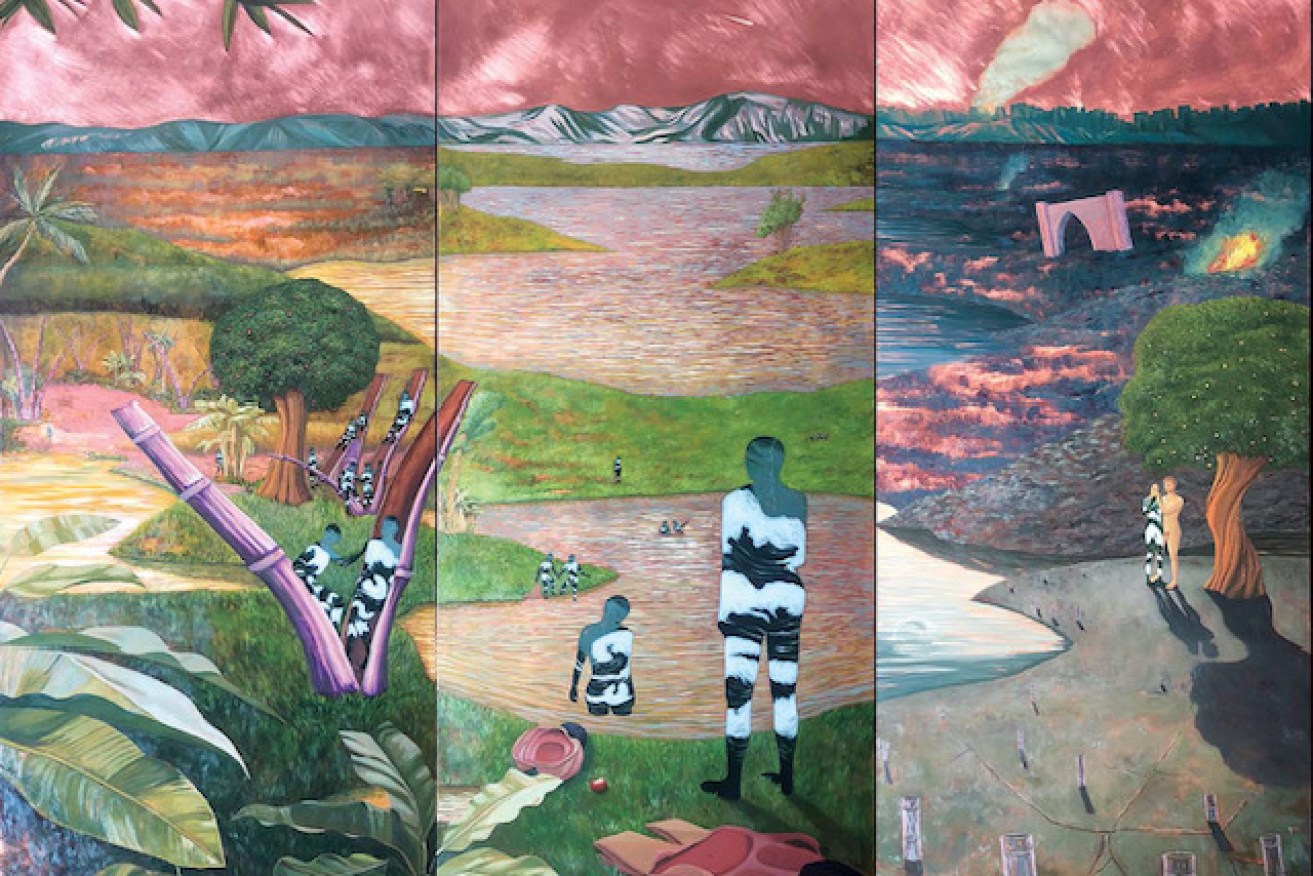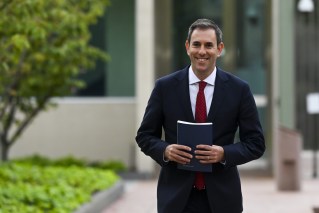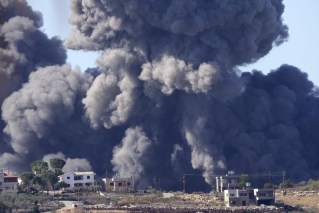Asia-Pacific Triennial is proof, if ever we needed it, that persistence pays
Even the depths of Covid-19 could not prevent the tenth instalment of Queensland Art Gallery’s three-yearly Asia Pacific Triennial from delighting audiences. Felix Cehak says its determination to forge ahead was well worth the effort.

Lee Paje, The stories that weren’t told 2019 / Oil on copper mounted on wood / 243.8 x 274.3cm
The 10th edition of the Asia Pacific Triennial, the Queensland Art Gallery’s long running survey exhibition, faces the obstacle of being an international art show during an era of closed borders.
Occupying all of GOMA, and much of the older QAG building, APT10 consists of the work of more than 150 individuals in a feat of volume, signalling at least its operational success. Good for an afternoon’s peruse, a thorough viewing will require a few days.
The show, dedicated to Australasia and its geographic neighbours, is a balancing act of duality. In form, the programme is self-reflexive, with contrasts and pairings- dualities of both pieces and mediums- providing curatorial direction. This works exceedingly well in the case of the ceramic mimesis of both Kimiyo Mishima and Yasmin Smith, situated near enough one another to draw the comparison, but far enough to allow breathing room.
The former is an outlier: turning 90 this year, Mishima is the oldest exhibiting artist, notable among largely younger, emerging figures. Her meticulously crafted ceramics in the form of discarded cardboard and empty cans become paradoxically impressive when their true nature is realised.
Smith utilises a similar device, with her characteristic slip cast pieces of vegetation, eucalyptus and bamboo, responding to the APT’s regional interplay.
Elsewhere, pairings become more blurred. The Yolngu/Macassan Project highlights the longstanding trade between Arnhem Land and seafaring visitors from Indonesia. The late Nawurapu Wunungmurra’s memorial poles are installed directly beneath a newly commissioned Macassan Parahu sail.
The two almost touch, implying the same artwork at first glance. Though a more than casual link exists between the two, each meticulous in its own right, this geographic connection is already best and inherently expressed in Yolngu artist Dhuwarrwarr Marika’s paintings of Macassan ceremonial swords, recreated in turn by the Indonesian Die2Tie fabric dyeing studio.
The risk of over-curation with these juxtapositions arises again in the presentation of Indigenous Taiwanese works, where Masiswagger Zingrur and Yuma Taru’s contributions similarly share a vertical axis.
More practically, what work is where in the APT is not always evident. Sumakshi Singh’s thread pieces, another standout, sit close to Christina Pataialii’s comparable domestic paintings, where a clumsy placement of titles may suggest they are a continuation of Singh’s work.
Similarly, Than Sok’s mesmerising suite of paintings have a separate didactic installed between each canvas, a counterintuitive choice to the elegant rhythm of the work.
The exhibition’s scale requires exploration to find its best offerings. Duality is also found between classical and new media. Video art, ever at risk of overlook, is often subjugated to the liminal corridor spaces of the gallery.
Michiko Tsuda’s ghostly work, employing time delayed footage of visitors in an illusory projection involving mirrors, is one that suffers in the area outside the cinema. Fortunately a second work by Tsuda has the run of the top floor, best showcasing its form.
New Zealand’s Coastal Flow Collective’s multi-screen installation can easily immerse too, if given the opportunity, yet traditional media remains key here. Amongst physical works, Thasnai Sethaseree’s massive collage commissions are notable, as well as breakout Filipino artist Lee Paje’s distinctive invocations of Catholic iconography in her paintings on copper.
However, the standout installation Uramat Mugas from the Uramat clan, a cultural group of Papua New Guinea, combines the two. An array of masks created for ceremonial purpose come alive on video.
A second room plays a loop of fire, with a presentation playing for 17 minutes at the start of every hour, making use of the dark space’s deceptive dimensions for a surprise that will reward attendance, more so if a viewer is willing to stay for a few minutes.
Similarly, amongst the eclectic works of Vietnamese conceptual artist Nguyen Phuong Linh is a piece involving a mechanical shadow show, a hidden gem that should not be missed.
In this sense, APT10 is at its best when ultra-specific, ultra-local and ultra-present. Brisbane based Gordon Hookey’s continuation of his MURRILAND! series features a portion of Brisbane’s skyline with a phallic nickname, visually embossed by Hookey, invoking the State Premier who commissioned its construction. Further down the corridor the actual building is visible, where you’ll be able to judge the likeness yourself.
The APT’s latest iteration is admittedly muted given the circumstance, with work still being installed on my third visit in mid-February. The idea of situating Australia alongside our geographic neighbours is also in many respects a very different precept the tenth time around.
Still, a lot here shines, if you give it the time to. APT10, much like the cultural life of its host city, is as big as you want it to be. This does not automatically make a deep delve more rewarding than a walkthrough, but the APT does have surprises in store, if you are willing to give it the attention.








